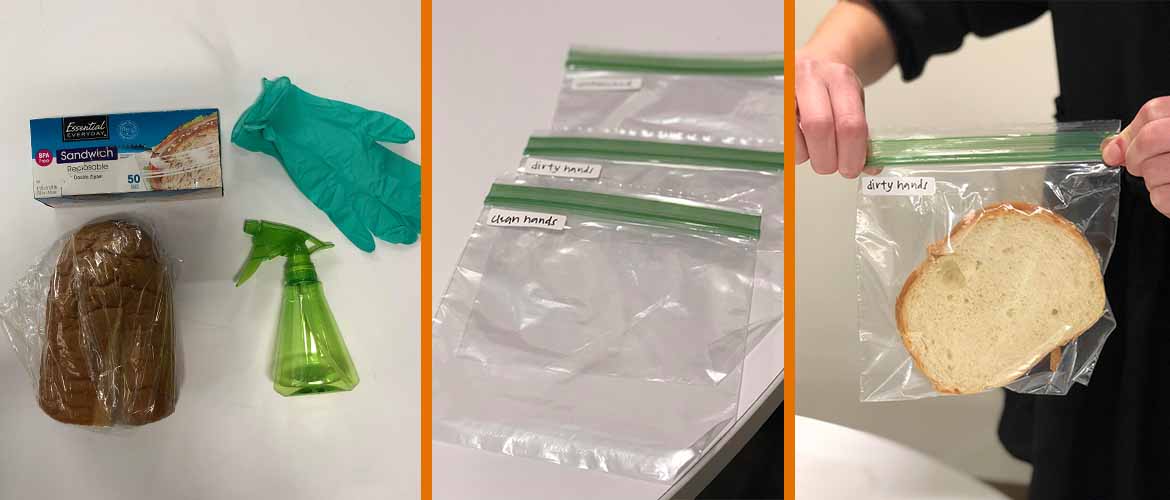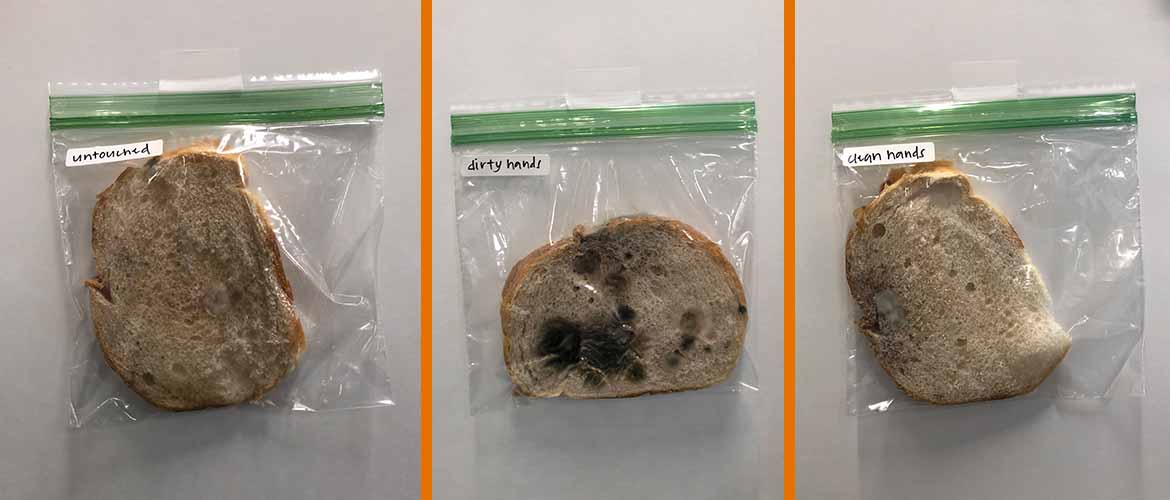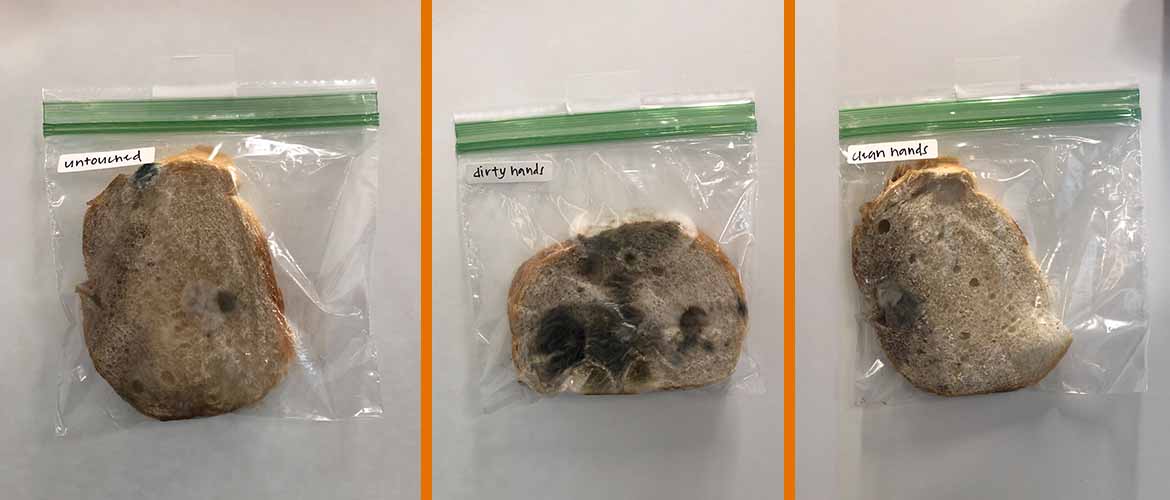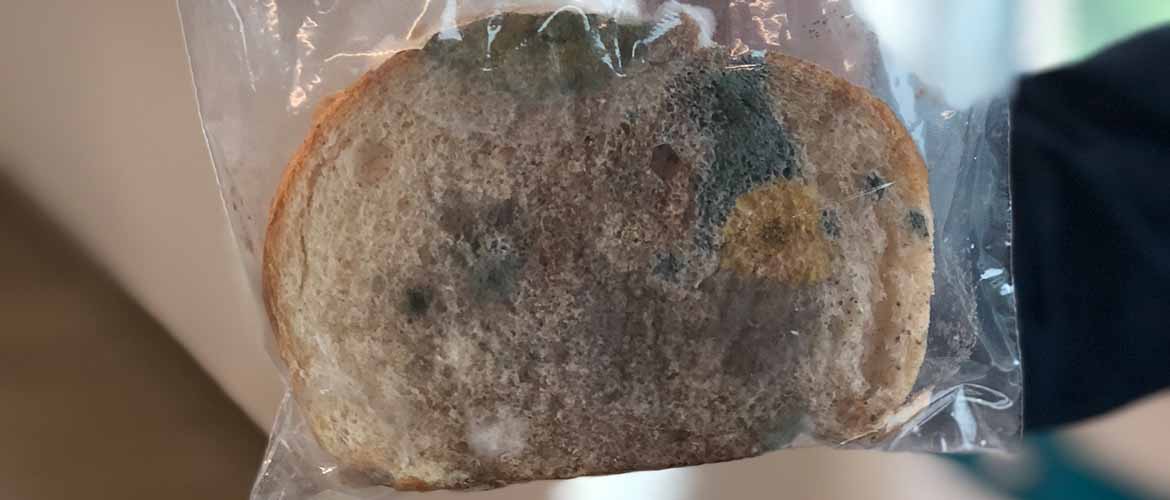August 9, 2024
From the time you wake up to the time you go to bed, your hands are touching everything in sight as you move about your day – the coffee pot at home, the door knob to your house as you pull it shut behind you, your car keys, and the doors of your office. And don’t forget all the gross and germy places at work. Along the way, everything you touch is helping your hands pick up bacteria and viruses, which are clinging to your hands. Did you know? On each centimeter of skin, there are about 1,500 bacteria.1 Have we grossed you out yet?
As you move along in your day-to-day activities, you’re spreading the bacteria and viruses that are on your hands to the other surfaces or people you may touch. That is, unless you wash your hands. According to the CDC, studies have shown that washing your hands can prevent one in five respiratory illnesses, such as the cold or the flu.2 Overall, handwashing can help prevent many sicknesses, which means less of a need for the use of antibiotics, lessening the chance of antibiotic resistance.2
Just in time for a new school year, we’re throwing it back to science class to show you the visible results of not washing your hands.
Can You Lend Me A Hand?
With the help of a fresh loaf of bread and some dirty hands, we’re on our way to showing you all the icky germs that are lurking everywhere you look – and touch – and how it can spread if you don’t practice proper hand hygiene.
If you want to follow along at home, here’s how to join in!
Experiment Setup
Start with three pieces of bread – one will be the control, one will collect unseen stuff (bacteria, viruses, mold spores) from dirty hands, and one will collect that stuff from clean hands. For this experiment, we picked bakery fresh bread that had no preservatives, which would slow down the mold formation.
Did you say mold? That’s right. Throughout this experiment, we will be growing mold spores on each piece of bread. While mold spores aren’t a virus or bacteria (they’re actually fungi!), they are what we use in this experiment to show us just how dirty our hands can become throughout the day. According to the CDC, mold is everywhere, even in the air and on common area surfaces. Remember, illness causing bacteria and viruses are also found on common surfaces that we touch throughout the day, so by the end of this experiment, we’ll be able to see just how much gross particles are on dirty and clean hands. Now, let’s get back to the experiment!
The first piece of bread will be your control, which you’ll place in a sandwich bag using plastic gloves later on in the experiment. If you've forgotten a few things from science class, a control is something that is used as a standard comparison to check the results of the experiment. In this case, we want to see the pace and types of mold that grow on a piece of bread that was not exposed to skin contact as compared to the other pieces of bread that were touched with clean and dirty hands.
The next piece of bread will be the one you touch with dirty hands. Make sure to not wash your hands for a few hours before you touch this piece of bread – and by all means, touch the bread all over with your hands.
The last piece of bread will be the one you touch after you have thoroughly washed your hands.

You’ll notice in the pictures above that our control has not changed from Day Three to Day Five. For our piece of bread that was touched by dirty hands, initial mold growth was evident. There is slight mold growth on the piece touched by clean hands, but not nearly as much as the piece touched by dirty hands.

Day Seven of the experiment
By the time Day Seven rolled around, the mold growing on the piece of bread touched by the dirty hands was more prominent than the mold growing on the other pieces.
If you’re following along at home, you’re fine to stop observing the bread after seven full days. Curiosity got the best of us and our team decided to extend the experiment over the weekend. When we returned on Monday, a full 10 days after the experiment first started, we were delightfully grossed out.

Day 10 of the experiment
After 10 days of mold growth, we noticed that the plastic bag was clinging to the mold growth. Speckles of black mold began to grow along the top of the piece of bread touched by clean hands. The control piece had slight mold growth, but it wasn’t as far along as the other pieces that were purposely exposed to dirty hands.
Mold was nearly covering the entire piece of bread that was touched by the dirty hands. The plastic of the bag was warped and clung tightly to the mold. If you remember what we said earlier, mold needs oxygen to grow. After we sealed the bags on Day One of the experiment, we did not open the bags again. Could the plastic bags tightly clinging to the mold be because all the oxygen in the bags was depleted from the growth of the mold? The real shock was when we removed the bags of bread from the poster board and looked at the backside of the piece of bread that was touched by dirty hands. Large spots of green, blue, and yellow mold decorated the back of the bread like polka dots.

At this stage in the game, the control piece of bread had visible mold growth, likely due to being past its shelf life.
More than Meets the Eye on Mold
There are four main types of mold that will grow on bread.
- Rhizopus - Gray or black, usually fuzzy. This is the most common type of bread mold.
- Penicillium - Green or light blue and white, usually fuzzy. Did you know? Blue cheese contains penicillium, but is safe to eat because it cannot produce the toxins mycotoxins and aflatoxins, which are found in dangerous molds.3
- Aperaillius - Green-blue in color. This type grows fast and usually in large clumps.
- Fusarium - Brown or red, also grows very fast.
While these are the four most common types of mold that will grow on bread, we did see other types of mold that ranged from large yellow patches to tiny black specks.
MedExpress Pro Tip: Mycotoxins and Aflatoxins are poisonous and Aflatoxins may cause cancer. If you are ever in doubt if the mold on your food is safe to be near, it’s best to just throw it out.
What Did You Learn In Class Today?
If you thought it was important to wash your hands before this experiment, you might be more aware of how vital it is now. While we didn’t grow bacteria or viruses that cause common illnesses like the cold and flu, we grew mold that our hands collected in daily activities, showing just how easy it is to pick up and spread other unseen particles, like bacteria and viruses, if you aren’t frequently washing your hands.
We also uncovered that not only is it important to wash your hands, but how you dry your hands is important when it comes to limiting the spread of germs. According to a study in the Mayo Clinic Proceedings, it was found that bacteria is more likely to spread from wet skin than from dry skin, making the thorough drying of hands after you wash them a necessary part of hand hygiene.4 If you’re wondering if you should use a paper towel or an air dryer to dry your hands, single-use paper towels are viewed as most hygienic because they reduce the number of germs on the hands due to the friction from wiping bacteria and viruses away with the paper towel. Hot air dryers, however, increased the bacteria on the hands.4
As we enter the school year and upcoming flu season, remember to wash your hands often. Hand hygiene is especially important during key times like before eating food, after using the bathroom, or after coughing or sneezing.
If you need a refresher on the correct way to wash your hands, here are five steps:
- Wet your hands with clean, running water and apply soap.
- Rub hands together with soap to produce a lather.
- Scrub all the surfaces of your hands and wrists. Don’t forget your palms, back of hands, between your fingers, and under your nails. Not sure how long to wash for? Hum the “Happy Birthday” song twice.
- Rinse soap away with clean running water.
- Dry hands using a one-time use paper towel.
No matter how often and how well you wash your hands, there is a chance you may come down with sickness this season. Have no fear – MedExpress is here. MedExpress can treat sniffles and sneezes (and more!), so you don't have to use your sick days. With our convenient hours, fitting a visit into your schedule is easy.
Originally published August 2018. Updated August 2024.
References:
1 MDH: Hands and Bacteria Poster. Accessed June 26, 2018.
2 CDC: Handwashing at Home, at Play, and Out and About. Accessed June 26, 2018.
3 The Independent: Why Is It Safe To Eat The Mould In Blue Cheese? Last Updated November 1, 2014. Accessed June 26, 2018.
4 Mayo Clinc Proceedings: The Hygienic Efficacy of Different Hand-Drying Methods: A Review of the Evidence. Last updated August 2012. Accessed June 26, 2018.
